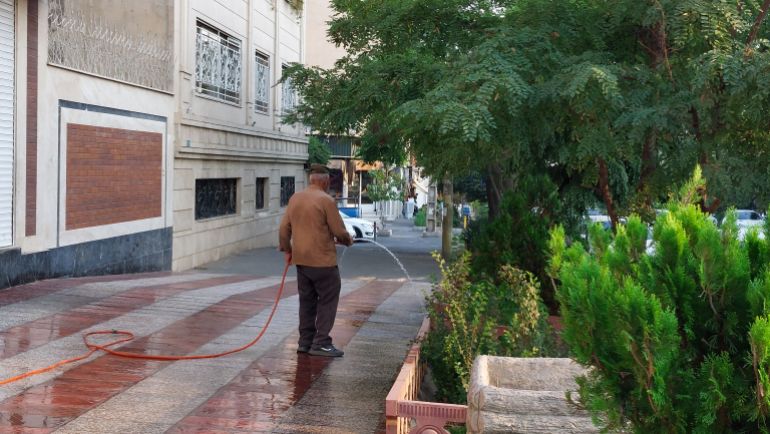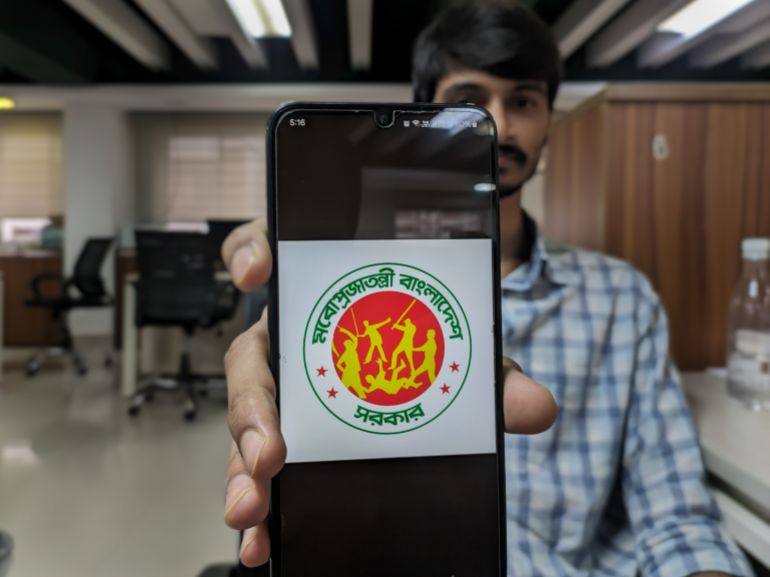Iran’s triple crisis is reshaping daily life | Climate Crisis News
Tehran, Iran – Every morning at 6am, Sara reaches for her phone – not to check messages, but to see when the day’s blackout will begin.
The 44-year-old digital marketer in Tehran has memorised the weekly electricity schedule yet still checks her phone each morning for last-minute changes as she plans her life around the two-hour power cuts.
“Without electricity, there is no air conditioner to make the heat tolerable,” Sara says, describing how Iran’s convergent crises – water scarcity, power shortages and record-breaking temperatures – have fundamentally altered her daily routine.
The water service cuts are unannounced. They last hours at a time and truly unnerve Sara, so she scrambles to fill buckets whenever she can before the taps run dry.
Crisis
For millions of Iranians, this summer has brought survival challenges in light of record-breaking heat, according to data from Iran’s Meteorological Organization.
The country is simultaneously grappling with its fifth consecutive year of drought, chronic energy deficits and unprecedented heat, a perfect storm that is exposing the fragility of basic services.
The Meteorological Organization said rainfall is down 40 percent during the current water year, the 12-month rainfall-tracking period, which starts in autumn.
As of July 28, Iran had received only 137mm (5.4 inches) of precipitation compared with the long-term average of 228.2mm (9 inches).
The electricity shortage is rooted in both infrastructure limitations and fuel supply challenges that have caused production capacity to fall behind rapidly rising demand.
An October report from parliament’s Research Center showed 85 percent of Iran’s electricity comes from fossil fuels, 13 percent from hydropower and the remainder from renewables and nuclear power.
While Iran possesses vast gas and oil reserves, decades of sanctions and underinvestment in transmission networks and power plants mean the system can’t keep up with consumption.
Adding to these capacity constraints, fuel supply disruptions have forced some power stations to resort sometimes to using mazut (heavy fuel oil) instead of natural gas, but authorities try to restrict it due to air pollution concerns.
Summer droughts compound the crisis by reducing hydroelectric generation precisely when air conditioning demand peaks, leaving millions of Iranians planning their lives around predictable blackouts and unpredictable water outages.
Survival
Twenty-six-year-old Fatemeh moved to Tehran from Andisheh, a town 15km (9 miles) west of the capital, a year ago to pursue her education.
She rented her first apartment, an exciting milestone that became a daily exercise in crisis management.
Fatemeh’s first unannounced water cut saw her in a sweltering apartment with temperatures soaring to 40 degrees Celsius (104 degrees Fahrenheit).
“The first thing I did was to stop moving altogether so my body temperature wouldn’t rise,” she recalls.

With only two bottles of drinking water and a block of ice available, she carefully rationed her supplies although she used precious ice to cool her feet.
Showering and using the bathroom became challenges, she says, describing how she ordered expensive bottled water online and used two bottles just to shower.
Now, after months of unpredictable outages, Fatemeh has a survival routine: storing water in multiple containers, pouring it into her evaporative cooler when cuts occur and tossing blocks of ice into vents during extreme heat.
When both the water and electricity go, she says it “feels like having a fever” and she soaks towels in her stored water to press them against her body for relief.
The balcony offers no escape. The air outside remains hotter than indoors, even at night.
Ripple effect
The infrastructure crisis extends beyond household inconveniences and is threatening livelihoods across the economy as offices and retail shops are forced to close for hours or for the day.
The repeated shutdowns and the economic pinch they cause could lead to layoffs, affecting families who depend on these jobs.
Small businesses face particular challenges.
Pastry shop owners have shared videos of themselves throwing spoiled cakes away after refrigerators fail.
Remote work, promoted as a solution, becomes impossible when homes lack both electricity and internet connectivity.
Shahram, a 38-year-old software company manager, says he has to send his employees home sometimes.
“Power cuts usually occur between 12 and 5pm,” he says. “That coincides with peak work hours, … [so] if the power cuts happen at 2, 3 or 4pm, I usually send everyone home because there’s no point. By the time power comes back, it is the end of their working day.”
Experts attribute the energy crisis to insufficient investment, failure to adopt new technologies – both of which are influenced by international sanctions – and unsustainable consumption.
Mohammad Arshadi, a water governance researcher and member of the Strategic Council of the Tadbir-E-Abe Iran think tank, agrees, saying Iran’s water crisis requires fundamental changes in consumption patterns.
While natural scarcity has been amplified by climate change, he says the main reason behind the current problem is how water is being used in Iran.
Expansion of water-intensive farming, large industries and urban sprawl have “fuelled the runaway growth of water demand”, he says.

Uncertainty
Back in her apartment, Sara continues checking her phone each morning, adjusting her schedule like millions of Iranians who have learned to navigate this new reality.
For Fatemeh, the psychological adjustment proves as challenging as the practical adaptations. Each morning brings new uncertainty about whether water will flow from her taps or electricity will power her laptop.
In a country where citizens once took infrastructure for granted, a generation is learning to live with scarcity.
As Iran approaches another winter with unresolved water and energy deficits, the experiences of Sara, Fatemeh, Shahram and millions like them suggest that the country’s infrastructure crisis has moved beyond temporary inconvenience to become a defining feature of modern Iranian life.
This story was published in collaboration with @Egab.




![A social media meme mocking the Bangladesh government logo, by showing a mob beating a person, highlighting the law and order chaos that followed Hasina's ouster [Masum Billah/Al Jazeera]](https://www.occasionaldigest.com/wp-content/uploads/2025/07/10-1752214367.jpg)
![Protesters on Dhaka streets on August 2, 2024 [Masum Billah/Al Jazeera]](https://www.occasionaldigest.com/wp-content/uploads/2025/07/3-1752214625.jpg)
![Protesters drawing graffiti, writing slogans against Sheikh Hasina on the walls of Dhaka [Masum Billah/Al Jazeera]](https://www.occasionaldigest.com/wp-content/uploads/2025/07/6-1752214764.jpg)
